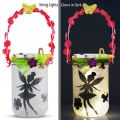How to Avoid Glare and Reflections in Reflective Product Photography

Ever tried snapping a photo of a shiny watch or glossy bottle only to see your face staring back at you? Yikes. If you've wrestled with the unpredictable beast that is reflective product photography, you're not alone. Shooting reflective surfaces can feel like walking a tightrope—one wrong move, and boom! Unwanted glare, weird reflections, and a ruined shot.
But don't worry—this isn’t magic. It’s just technique.
Understanding the Reflection Game:
First off, why is this so tricky? Reflective objects, like metal, glass, or plastic, basically act like mirrors. They don’t just reflect light—they reflect everything. The camera, the photographer, and even that messy background you thought was out of frame.
So, what's the fix? Simple: control what gets reflected.
Light Is Everything:
Lighting is your best friend—and your worst enemy. The key here isn’t just brightness but direction. Instead of blasting your product with a direct flash (which almost always leads to a harsh glare), try using diffused lighting.
Softboxes, umbrellas, or even a DIY trick like a white bedsheet can spread light evenly across the product. This softens shadows and cuts down on those obnoxious bright spots.
And don’t be afraid to move things around! A small shift in your light’s angle can mean the difference between a clean shot and a hot mess.
Use Flags and Gobos:
Here’s a little insider secret: black foam boards are your best friend. In photography speak, these are called flags or gobos. Place them just outside the frame to block unwanted reflections or even create defined edges on a shiny surface.
They don’t cost much, but the results? Chef’s kiss.
Change Your Angle, Change the Story:
Sometimes, the best move is simply moving. A small shift in your camera’s position can drastically reduce the reflection of light or background clutter. Don’t be glued to one setup—bend, crouch, and slide side to side. It’s a dance, not a statue pose!
Also, try shooting from a higher or lower angle, depending on the product’s shape. The more you experiment, the better you’ll get at predicting where reflections will hit.
Tent It Up:
A light tent (or shooting cube) is a game-changer for reflective product photography. It surrounds your product with evenly diffused light, reducing the chance of harsh reflections. You can either buy one or DIY it with some white fabric and a little patience.
Got a small, ultra-reflective item like jewelry or sunglasses? A tent might be your new best buddy.
Conclusion: Reflect Less, Sell More
Let’s be honest—reflective product photography can be a pain in the lens. But with a few smart moves—like diffusing your light, tweaking your angles, and using some crafty tools—you can turn reflection chaos into glossy perfection.
So, next time you're staring down a shiny object, don't sweat it. With the right tricks up your sleeve, you'll be shooting like a pro in no time. Ready to make those products shine without stealing the spotlight?
Other articles and publications:
Articles and publications of other companies:
- +1 (770) 690-9389
- 760 Vinca Ct, Alpharetta, GA 30005, USA
- www.etherartsus.com/







